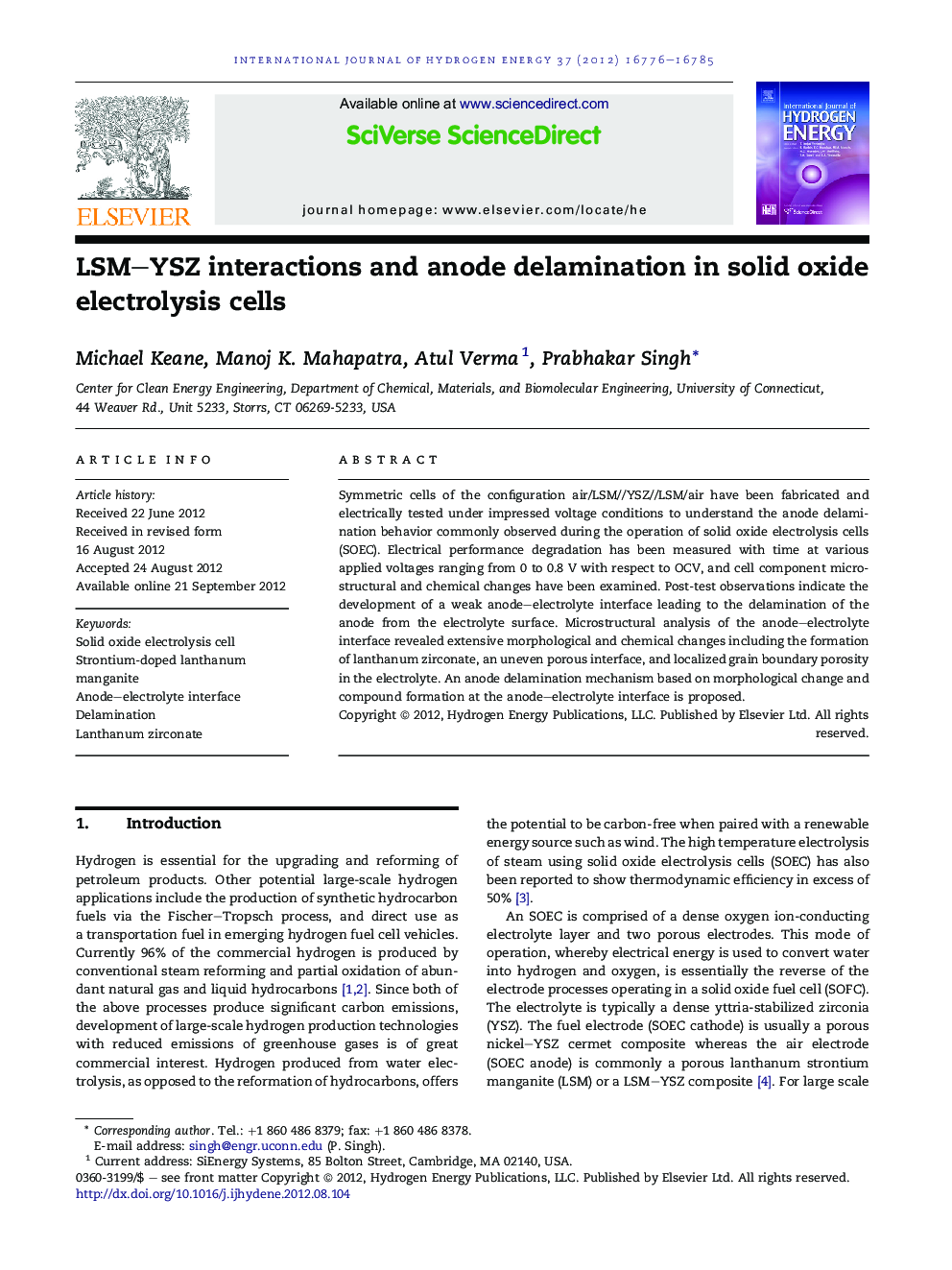| Article ID | Journal | Published Year | Pages | File Type |
|---|---|---|---|---|
| 1270857 | International Journal of Hydrogen Energy | 2012 | 10 Pages |
Symmetric cells of the configuration air/LSM//YSZ//LSM/air have been fabricated and electrically tested under impressed voltage conditions to understand the anode delamination behavior commonly observed during the operation of solid oxide electrolysis cells (SOEC). Electrical performance degradation has been measured with time at various applied voltages ranging from 0 to 0.8 V with respect to OCV, and cell component microstructural and chemical changes have been examined. Post-test observations indicate the development of a weak anode–electrolyte interface leading to the delamination of the anode from the electrolyte surface. Microstructural analysis of the anode–electrolyte interface revealed extensive morphological and chemical changes including the formation of lanthanum zirconate, an uneven porous interface, and localized grain boundary porosity in the electrolyte. An anode delamination mechanism based on morphological change and compound formation at the anode–electrolyte interface is proposed.
► Symmetric solid oxide cells (air/LSM//YSZ//LSM/air) confirm delamination of anode. ► Cell resistance increases with applied voltage and exposure duration. ► Anode–electrolyte interface shows lanthanum zirconate formation. ► Irregular interface and porosity form at anode–electrolyte interface. ► Cathode–electrolyte interface shows minimal structural and compositional changes.
